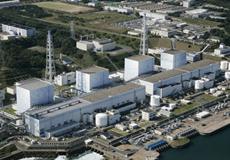|
Tokyo: The Japanese government's Nuclear and Industrial Safety Agency (NISA) backed off from an earlier statement that there was a strong likelihood of a breach in the reactor core of one unit at the quake and tsunami ravaged Fukushima nuclear complex.  It moderated its position to saying that high-level radiation detected in water at the No 3 unit of the complex appeared to have originated from the reactor core but there was no data to suggest that the reactor vessel had been cracked or damaged. It moderated its position to saying that high-level radiation detected in water at the No 3 unit of the complex appeared to have originated from the reactor core but there was no data to suggest that the reactor vessel had been cracked or damaged.
Agency spokesman, Hidehiko Nishiyama, said it remained uncertain how the leakage happened. The government, which has set the exclusion zone within a 20 kilometre radius of the Fukushima plant, meanwhile, changed the parameters and said residents within a 30 kilometre radius of the power station, could now voluntarily leave. The official directive is for them to stay indoors. The Nuclear Safety Commission of Japan, a government body, recommended voluntary evacuation as release of radioactive materials from the plant was expected to continue for some time. The clarification from NISA came a day after three workers were exposed to water containing radioactive materials 10,000 times the normal level at the turbine building connected to the No 3 reactor building. Highly radioactive water was found also at the No 1 and No 2 reactors' turbine buildings. The leakage of highly contaminated water is the latest twist in the on-going saga to control damage at the quake/tsunami affected Fukushima nuclear park. There is now clear danger that workers at the site could be exposed to radioactive elements and this, in turn, affects activities aimed at restoring the plant's crippled cooling functions. Cooling down overheated reactor cores and spent-fuel pools of water are critical to gaining control over the crisis engulfing the damaged nuclear site. The three workers were transferred to the National Institute of Radiological Sciences in Chiba Prefecture Friday afternoon, after two of them were taken Thursday to a Fukushima hospital for possible radiation burns to their feet, the plant operator Tokyo Electric Power Co. said. Nishiyama said the high-level radiation very likely came from the reactor, where overheating fuel rods are believed to have partially melted. He said it remains to be investigated how radioactive water reached the underground site where the workers were exposed. Huge volumes of water have been poured into the reactor and the boiling spent fuel pool in a bid to cool them down. Also on Friday, despite the partial halt of restoration work due to radiation exposure to technicians, the plant operator TEPCO began injecting freshwater into the No 1 reactor core, and began preparations to inject freshwater into all the troubled three reactor cores and four spent fuel pools. So far, in an emergency move, seawater has been used. The attempt to inject water into the reactor cores and spent-fuel pools has been undertaken as crystallized salt could form a crust on the fuel rods and prevent smooth water circulation. TEPCO currently uses freshwater from a dam near the plant. Following the March 11 quake-tsunami disaster, cooling functions at the No 1, No 2 and No 3 reactors failed and their reactor cores partially melted. Lack of adequate power supply prompted the use of seawater through helicopters and fire trucks in a bid to prevent the fuel from being exposed. NISA also said that black smoke, which had been observed intermittently, stopped coming out of the No 3 reactor building on Friday morning, but white smoke, possibly steam, was still seen rising from the No 1, No 2 and No 4 units.
|